Iran is a country with an incredibly rich history and culture, and one way to experience this is by visiting its UNESCO World Heritage Sites. These sites represent some of the most significant cultural, historical and natural landmarks in Iran, and are recognized for their outstanding universal value to humanity.
Visiting these UNESCO World Heritage Sites in Iran is not only a great way to learn more about the country's history and culture but also a chance to appreciate the outstanding beauty and unique landmarks of this amazing country.
One of the most well-known UNESCO sites in Iran is the ancient city of Persepolis. Built over 2,500 years ago, this magnificent complex was once the ceremonial capital of the Achaemenid Empire. Visitors can explore the ruins of the city, including the grand palaces, tombs, and reliefs that showcase the impressive architecture and artistry of the time.
Another popular UNESCO site in Iran is the ancient city of Pasargadae, which was once the capital of the Achaemenid Empire. Here, visitors can see the tomb of Cyrus the Great, the founder of the Persian Empire, as well as other impressive ruins such as the palace of Xerxes I and the Pasargadae fortress.
Other UNESCO sites in Iran include the beautiful gardens of Shazdeh in Mahan, the ancient city of Bisotun, and the historic city of Yazd, which is known for its stunning architecture and rich cultural heritage.
Step back in time to the grand ceremonial site, Persepolis, nestled in Iran's ancient bosom. In its heyday, it was the capital of the Achaemenid Empire, a colossus among empires. Masterminded by Darius the Great in the 6th century BCE, it was later expanded by Xerxes I and Artaxerxes I, becoming a hub for trade, religion, and politics. Awe-inspiring architecture was the norm and Persepolis was the proud owner of some of the most magnificent structures of the time.
Alexander the Great had other plans and in 330 BCE, he ravaged the city, leaving it in ruins. But, the legacy of Persia's ancient glory days still stand today! The ruins of Persepolis have mesmerizing remnants of the past, including the Gate of All Nations, the Apadana Palace, the Throne Hall, and the Treasury. Detailed carvings and intricate inscriptions provide a peek into the Achaemenid Empire's beliefs, customs, and accomplishments.
Persepolis is a UNESCO World Heritage Site, beckoning visitors from around the world to marvel at its historical, architectural, and artistic gems. A must-visit for all ancient history buffs!
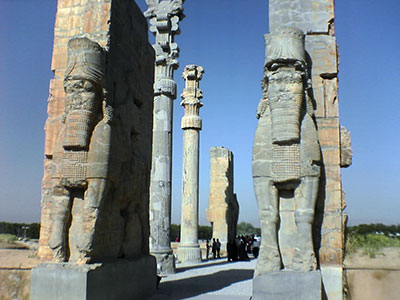
Discovering Persepolis with Uppersia
Step back in time and soak up the splendor of Pasargadae, a grand city in Iran that once served as the hub of the Achaemenid Empire under Cyrus the Great. Among the many treasures of the city, stands the majestic Tomb of Cyrus, a site of immense historical importance. This towering structure stands on a platform with six broad and slender steps and is made of stunning white limestone, soaring to a height of around 13.7 meters. For centuries, it has drawn pilgrims from across the globe and has been designated as a UNESCO World Heritage Site. So, if you're an aficionado of ancient history and architecture, a visit to the Tomb of Cyrus is an absolute must!
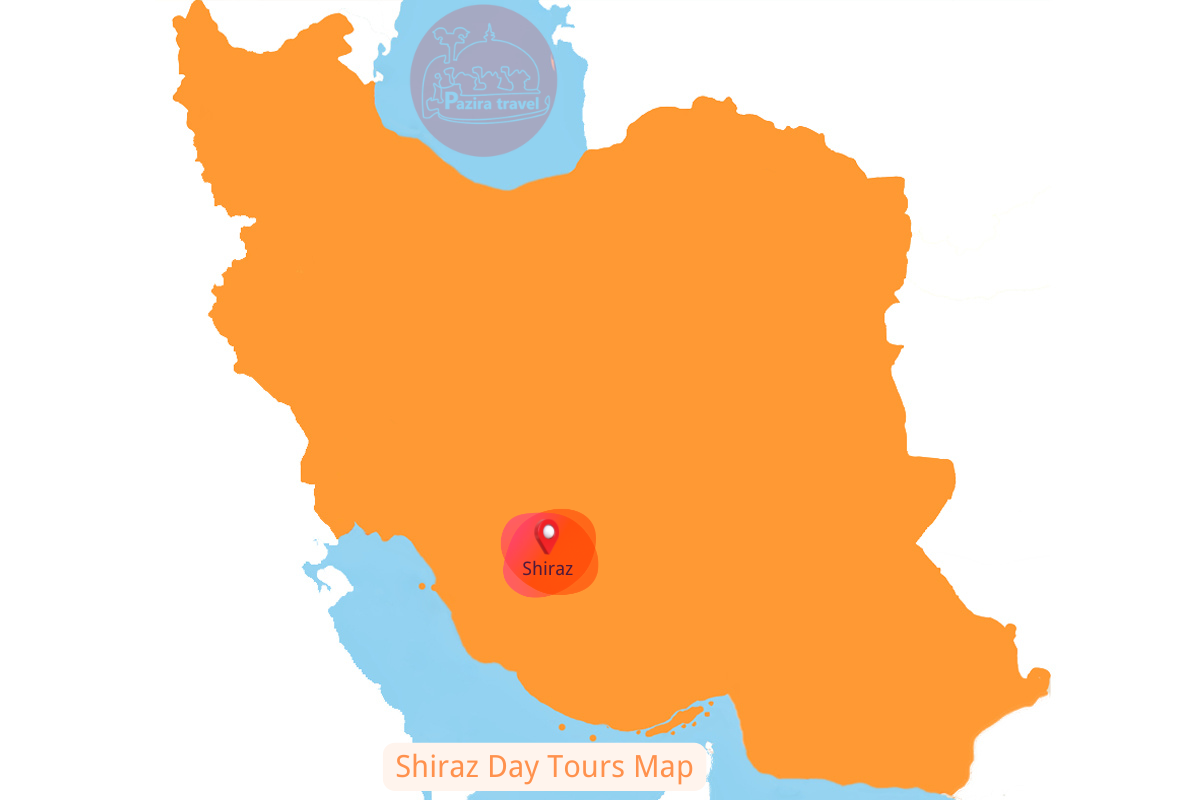
Step back in time and explore the Chogha Zanbil, an ancient Elamite complex nestled in the stunning Khuzestan province of Iran. Way back in 1250 BC, the Elamite king Untash-Napirisha built this jaw-dropping complex to honor the Elamite god Inshushinak and used it as a religious hub. And oh boy, it's a sight to behold! The complex boasts a ziggurat, a team of temples and palaces, and a whole lot of smaller buildings. You can't miss it! It's a UNESCO World Heritage Site and the perfect spot for history buffs to soak in incredible Elamite architecture.
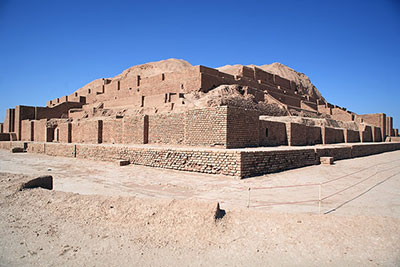
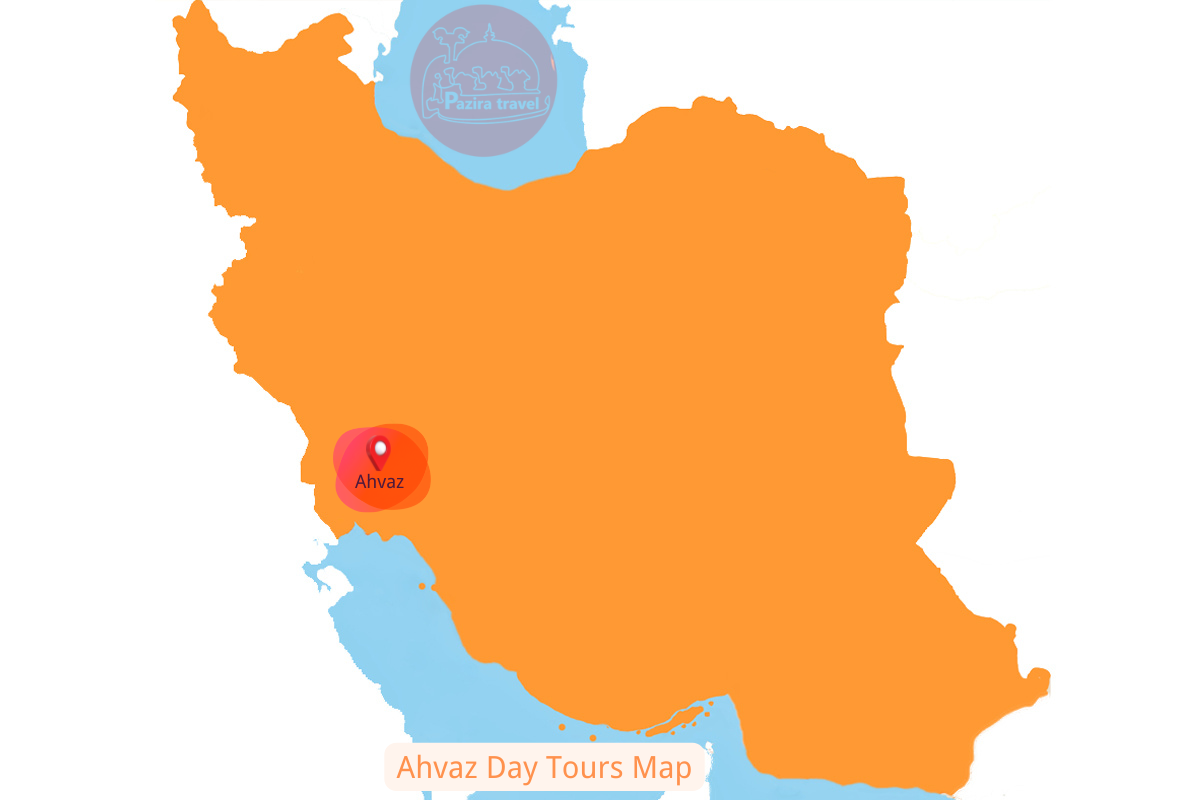
Step into a time machine and journey back to ancient Persia, where the Bistun historic complex reigns supreme. Tucked away in the western foothills of Iran, this awe-inspiring site is famous for its inscriptions and carvings that harken back to the days of the Achaemenid Empire. Perched atop a rugged mountain cliff, the complex is a jaw-dropping sight to behold.
But wait, there's more! The star attraction is undoubtedly the famous inscription of Darius the Great, the third king of the Achaemenid Empire. Etched into the rock face, it chronicles the king's triumphs and victories, written in three different languages: Old Persian, Elamite, and Babylonian.
But that's not all--the fortress and temple are also must-sees. The fortress, built to fend off pesky invading armies while the temple was the go-to spot for religious rituals.
Beyond its historical significance, the Bistun historic complex is also a tourist hotspot. Hikers can make the trek up the mountain to gaze at the inscriptions and the sprawling vistas, which will surely take your breath away. And to top it off, the complex is a UNESCO World Heritage site, cementing its place as an invaluable piece of world history.
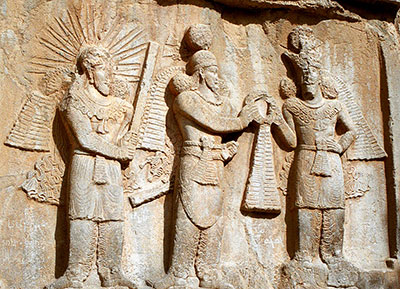
Travel back in time to the 7th century and find yourself in the northwestern region of Iran, where you'll stumble upon the incredible Armenian Monastic Ensembles. These monasteries are the real deal, boasting Armenian architectural styles shaped by both Byzantine and Persian influences. The ensemble is made up of three monasteries: the oldest is St. Thaddeus Monastery, also known as Qareh Klise. It's been around since the 7th century! The second is the awe-inspiring St. Stepanos Monastery, a daring structure perched on a rocky hilltop and built in the 9th century. This one features a unique circular drum and conical dome design that will leave you in awe. The final piece of the puzzle is the Chapel of Dzordzor, with its intricate stone carvings and 14th-century roots, sitting pretty near St. Stepanos Monastery.
These monasteries are not just pretty to look at either. They're important religious and cultural centers for Armenia's community in Iran. It's no wonder that these gems have been named a UNESCO World Heritage Site as they represent some of the most significant architectural achievements of our time. So, pack your bags and prepare for a cultural feast that'll leave you mesmerized!
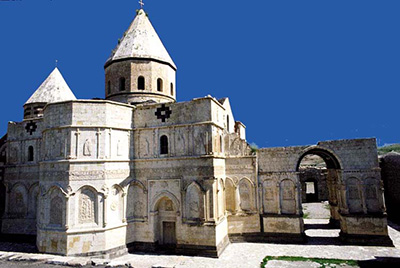
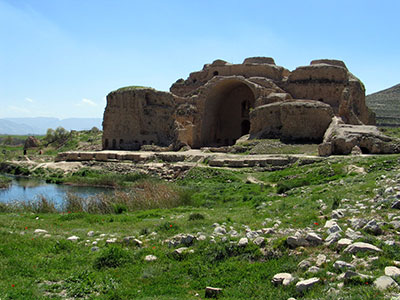
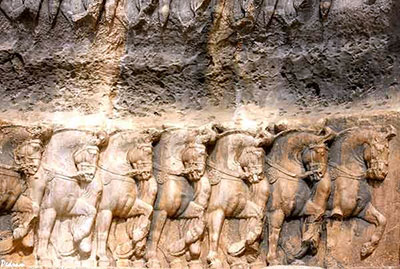
Get transported back in time to a bustling ancient city, Shahr-e Sukhteh, or the Burnt City, found in the southeast of Iran. From 3200 BC until 1800 BC, this city was a hub of trade, agriculture, and metallurgy, revealing a complex society that will blow your mind.
What's more, the citizens of Burnt City were quite the innovators, crafting the world's very first artificial eyeball and building an elaborate irrigation system. Plus, they left behind a trove of pottery shards covered in mysterious inscriptions that have yet to be cracked.
As you wander through the grid-like streets, lined with mud brick houses, you can almost smell the aroma of the marketplace serving as the heart of the city. So, come along and discover the secrets of Shahr-e Sukhteh, a crucial archaeological site that illuminates the rich history of Iran and human civilization.

Step back in time with the Shushtar Historical Hydraulic System, an awe-inspiring engineering wonder hailing from the Sassanian era in Iran. This impressive structure was designed to wrangle water for the city of Shushtar and beyond using a web of canals, tunnels, and watermills, all powered by the mighty Karun river.
The ancient engineers were no slouches, utilizing earthenware pipes and dams to craft a complex water management system that could quench thirsty crops and people alike.
Fast forward to today and this magnificent marvel still reigns supreme as a UNESCO World Heritage Site, providing water for the region and wowing visitors who come to admire the Sassanian's engineering chops.

Welcome to the ancient city of Takht-e Soleyman, situated in Iran's northwest, a UNESCO World Heritage Site brimming with cultural and historical significance. This fortified city, built during the Sassanid era, is perched on a volcanic plateau, hugged by towering mountains. The centerpiece of the city is a stunning crater lake, revered by the Persians for its healing properties, and used for religious rites.
Takht-e Soleyman was an illustrious cultural and religious hub in the Sassanid Empire, boasting a temple dedicated to Anahita, goddess of fertility and water. This holy site sat on a man-made platform, adjacent to a sacred pool, and ranked as one of the most important religious centers in Persia.
Sadly, Takht-e Soleyman was abandoned after the Arab invasion of Persia in the 7th century but was rediscovered in the 19th century. Today, it's a magnet for tourists, eager to delve into its rich history and cultural heritage.
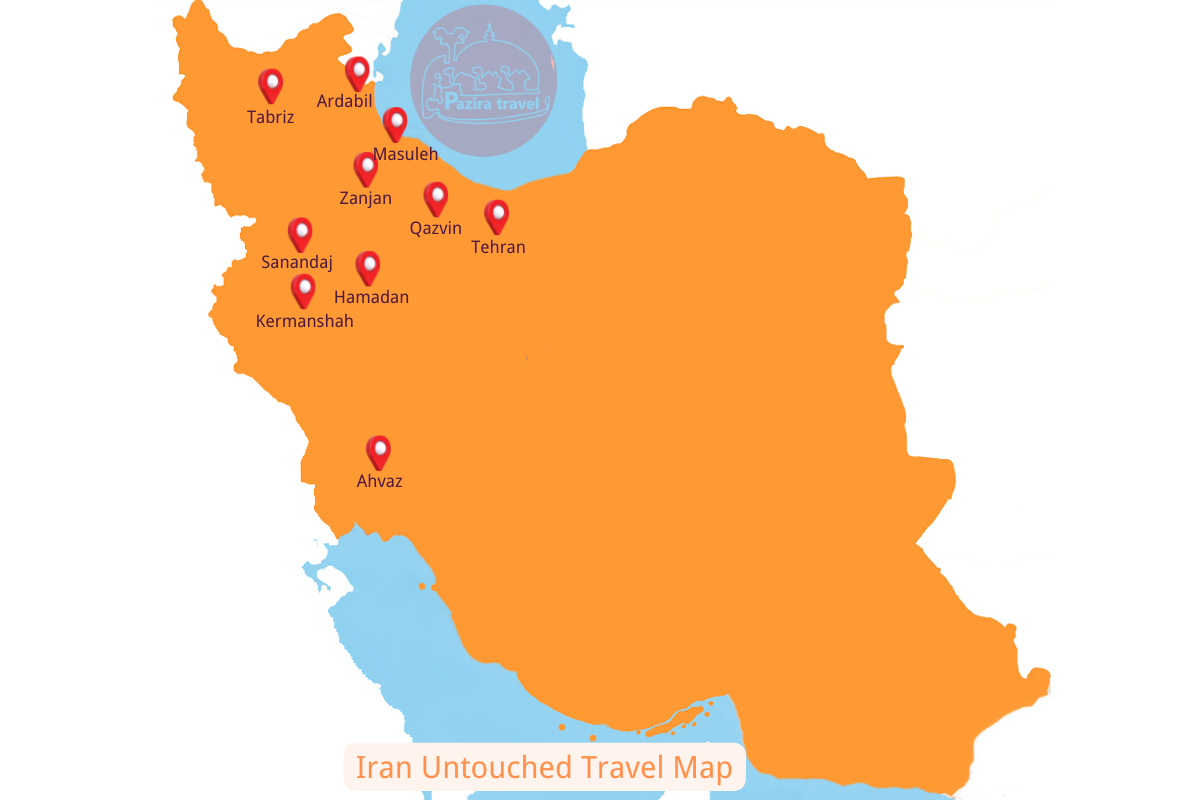
Nestled in the Iranian Zanjan Province, lies the charming city of Soltaniyeh, home to the awe-inspiring tomb of Oljaytu, the eighth ruler of the Ilkhanid dynasty. This UNESCO World Heritage Site is a shining example of the grandeur of Persian Islamic architecture, boasting intricate details and a dome that seems to reach the heavens.
Beyond the mausoleum, Soltaniyeh is rich with other historic treasures including the Chehel Sotoun Mosque, the Jameh Mosque of Soltaniyeh, and the Soltaniyeh bazaar.
This city is not only a feast for the eyes but also a creative muse, with its cultural significance spanning across Persian literature, music, and art. A top-rated tourist destination, Soltaniyeh beckons visitors from all corners of the world to discover its rich history and marvel at the beauty of its monuments.
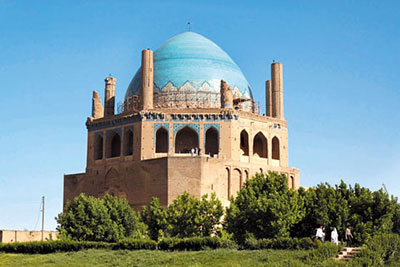
Welcome to the magical world of the Sheikh Safi al-din Khānegāh and Shrine Ensemble! A treasure trove of history and beauty, this wonderland is nestled in the heart of Ardabil, Iran. Take a step back in time to the 16th century and prepare to be dazzled by the Islamic architecture that earned this gem a UNESCO World Heritage badge.
This complex is a jaw-dropping collection of buildings, including a mosque, a library, a mausoleum, a school, and a caravanserai. But the real stunner is the mausoleum of Sheikh Safi al-din Ardabili himself, the mystical founder of the Safavid dynasty. The walls are adorned with Quranic verses and intricate geometric patterns that will leave you speechless.
The other structures are just as impressive, boasting grand entrance portals, courtyards lined with arcades, and a dreamy minaret. And the library? Don't even get us started! It's a treasure trove of rare manuscripts dating back to the medieval period.
So, don't miss your chance to experience the magic of the Sheikh Safi al-din Khānegāh and Shrine Ensemble. It's a living, breathing reminder of Iran's rich cultural heritage and a true masterpiece of Islamic art and architecture.
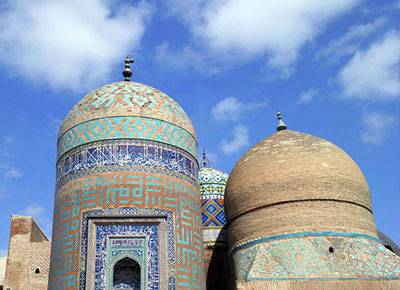
Behold the magnificent Tabriz Historic Bazaar Complex, crowned as a UNESCO World Heritage Site and nestled in the heart of northwest Iran. This sprawling complex is a treasure trove of over 27 hectares of interconnected structures, buildings, and enclosed spaces that have served as a hub of commerce, socialization, and cultural exchange for centuries.
With over 5.5 kilometers of covered bazaars, caravanserais, public baths, mosques, and other architectural structures, this complex stands as a testament to the region's trade and economy, as well as its architectural and cultural significance.
Explore the colorful diversity of goods and services on offer, from tantalizing spices to luxurious textiles, intricate jewelry, and scrumptious food. You can even take advantage of services such as money exchange, banking, and transportation. The complex is home to a variety of cultural and religious institutions, including the splendid Blue Mosque, the Constitutional Revolution House, and the Azerbaijani Museum of Iron.
But the Tabriz Historic Bazaar Complex is more than just a market. It is a masterpiece of traditional Iranian and Azerbaijani architectural styles that blend together in a mesmerizing tapestry of brick and tile work, vaulted ceilings, and intricate ornamentation.
Today, this vibrant center remains a hub of cultural and economic activity, attracting visitors from all corners of the world. It stands as a living testament to the rich history and cultural heritage of the city of Tabriz and the surrounding region.
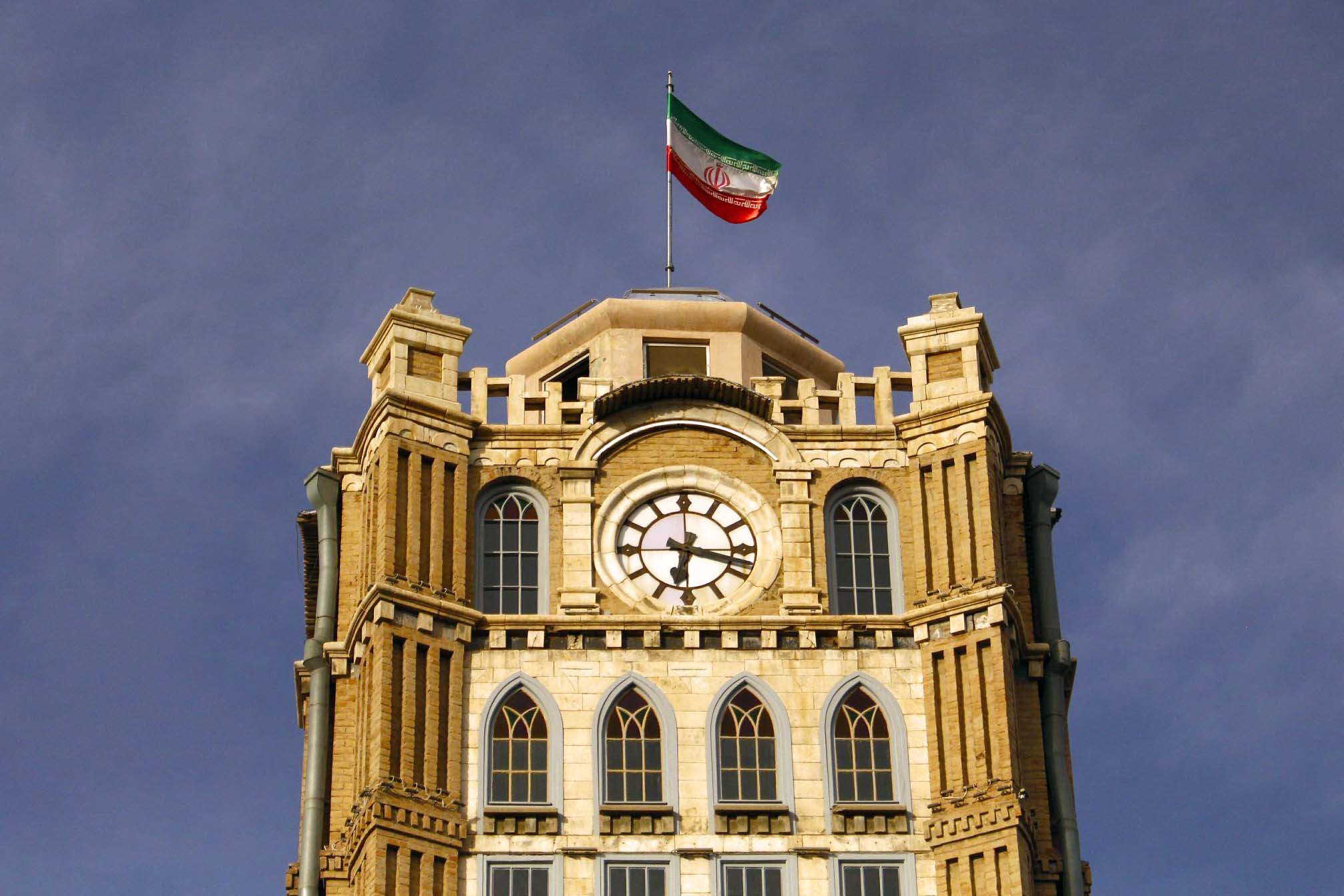
Behold the awe-inspiring Naqsh-e Jahan Square in Isfahan, Iran, a sprawling wonderland that covers a whopping 89,000 square meters! This breathtaking cultural hub is flanked by mesmerizing historical landmarks, like the Ali Qapu Palace and the Sheikh Lotfollah Mosque. Back in the 17th century, it was a go-to spot for all kinds of shindigs, from polo matches to military parades. Today, it's a UNESCO World Heritage Site and a must-see for globetrotters. Explore the intricate tilework, stunning fountains, and lush gardens that make this square a true feast for the eyes.
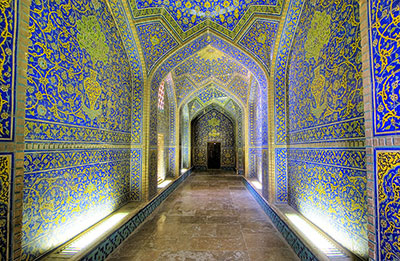
Get ready to be wowed by the breathtaking beauty of Masjed-e Jame mosque, nestled right in the heart of Isfahan, Iran. This ancient treasure dates back to the 8th century and is one of the biggest and oldest mosques in the land. The mosque is a true work of art, showcasing the very best of Islamic architecture with amazing details like intricate tile work, geometric patterns, and calligraphic inscriptions.
Throughout the years, this mosque has been through some serious glow-ups, getting multiple renovations and expansions. The Seljuk dynasty was the most impressive of them all, adding a spacious courtyard and a towering minaret to the mosque.
Today, Masjed-e Jame stands proud as a symbol of Iran's rich cultural heritage, attracting visitors from all over the world who come to marvel at its beauty and soak up its spiritual energy. Wander inside to the massive prayer hall, with its stunning dome and intricate wall and ceiling designs. And don't forget to explore the busy bazaar that surrounds the mosque, where you can grab some souvenirs and traditional handicrafts. Trust us, if you're into Islamic architecture or the history and culture of Iran, Masjed-e Jame of Isfahan is a must-see destination!
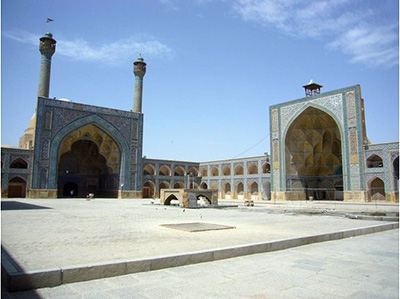
We're off to the captivating Gonbad-e Qabus, a splendid city nestled in northern Iran. The town is named after the iconic Gonbad-e Qabus Tower, a UNESCO World Heritage Site that'll floor you with its grandeur. This towering structure reaches 72 meters high and dates back to the 11th century, built to honor a Ziyarid ruler named Qabus ibn Wushmgir.
But wait, there's more! Gonbad-e Qabus is also a haven for nature enthusiasts, with lush gardens, scenic parks, and historic sites scattered throughout the city. Take a journey back in time with a visit to ancient city walls, mosques, and palaces, or simply bask in the beauty of the surrounding landscape.
And, if that's not enough to entice you, Gonbad-e Qabus is also a hot spot for commerce and industry, with bustling businesses ranging from agriculture to technology.
Whether you're a history buff, culture seeker, or nature lover, Gonbad-e Qabus is the perfect destination to add to your bucket list. Don't miss out on the chance to explore the tower, stroll through stunning parks, and get lost in the city's enchanting atmosphere.
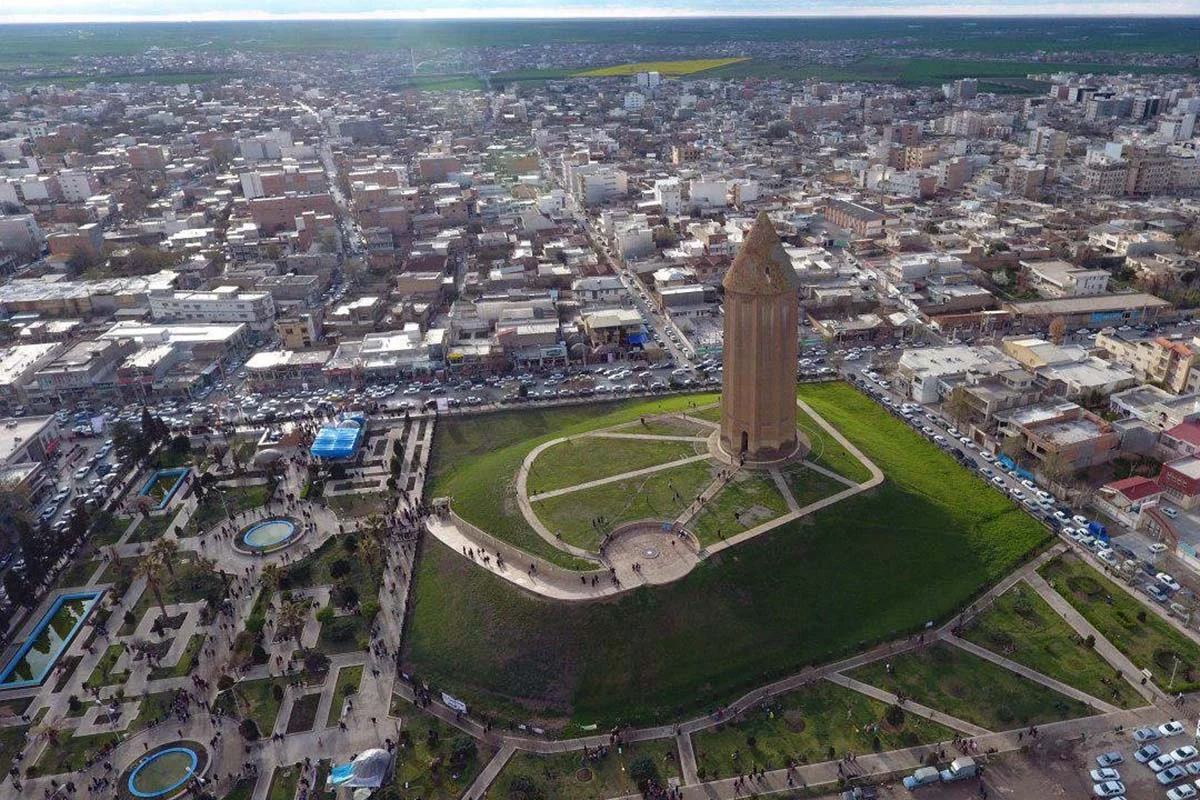
Behold the awe-inspiring beauty of Golestan Palace, a historical masterpiece nestled in Tehran, Iran. Built during the Qajar era, this UNESCO World Heritage Site is the epitome of grandeur, showcasing the intricate designs and stunning craftsmanship of Persian architecture. The palace boasts several halls, museums, and courtyards, each one a testament to Iran's rich cultural heritage.
Prepare to be spellbound by the Mirror Hall, glimmering with thousands of tiny mirrors creating a mesmerizing display of light. The Marble Throne Hall is equally impressive, with its intricately designed marble throne and stunning ceiling. A stroll through the palace gardens and fountains offers a tranquil escape from the city's hustle and bustle.
Every year, thousands of visitors flock to witness the magnificence of this palace, and it's no surprise why. It's a true gem of Iranian culture, and a visit to Tehran is incomplete without a tour of Golestan Palace. Get ready to be dazzled!
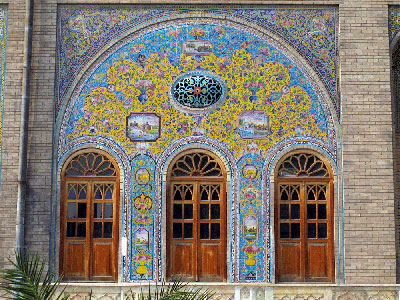
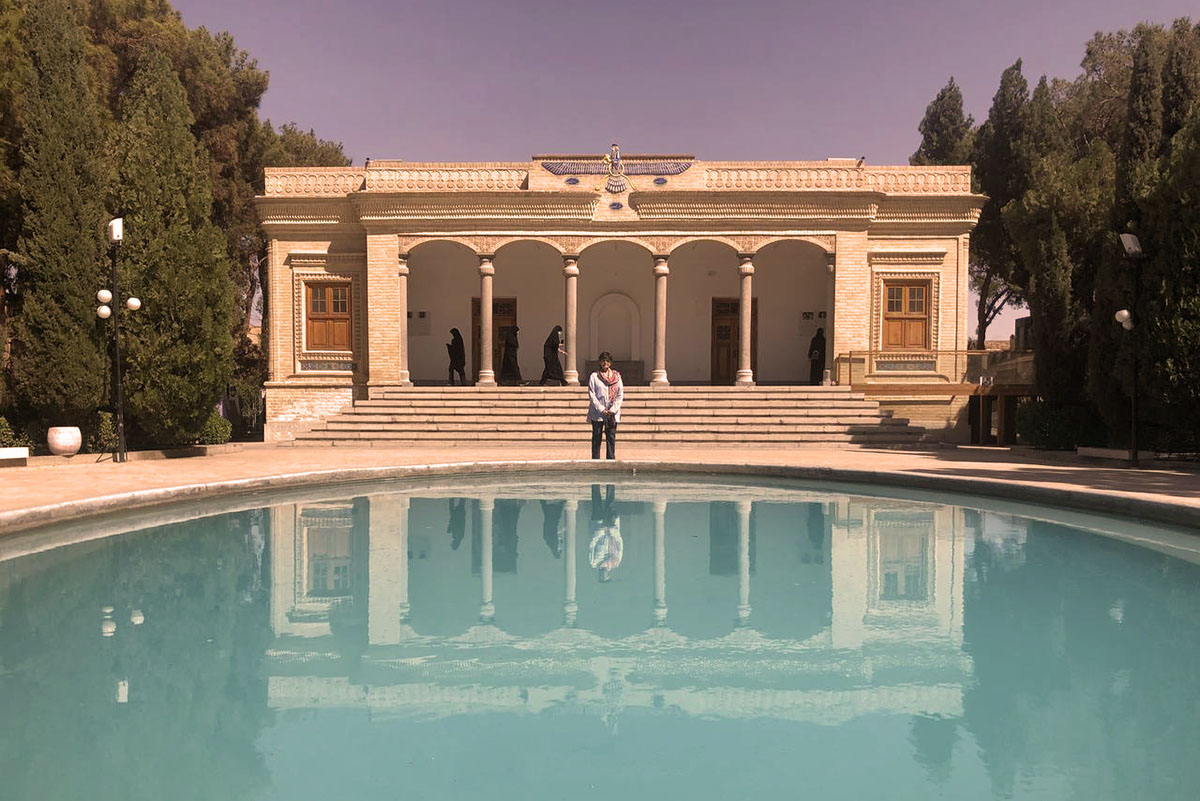
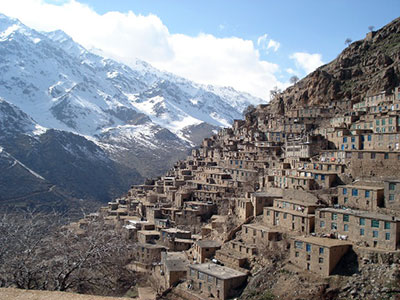
Behold Bam, the city that boasts a treasure trove of cultural wonders! This charming city is steeped in history and home to a plethora of landmarks that'll leave you awestruck.
At the top of the list is the legendary Bam Citadel, a colossal fortress that has stood tall for over two thousand years. Once the heart of trade and culture, this UNESCO World Heritage Site played a crucial role in shaping the Silk Road. These days, it's a magnet for tourists from all over the world.
Bam's cultural scene is a colorful tapestry of local music, dance performances, and celebrations that'll leave you spellbound. Take part in the festivities and soak up the rich cultural heritage that Iran is famous for.
Bam's cultural landscape is a shining example of its fascinating past and Iran's contribution to the world's heritage.
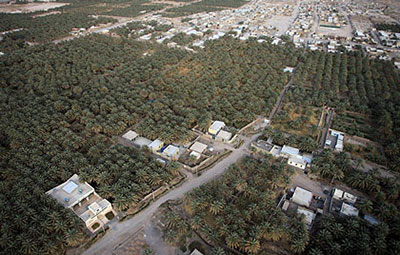
Welcome to the charming cultural haven of Maymand, perched in Kerman, Iran. This ancient village has been a bustling home for over 12,000 years, nestled into the rugged mountain landscape. Boasting a distinctive architecture style, Maymand's homes are crafted from mud and stone, using the "kicheh" technique that offers a natural shield against both the sweltering sun and freezing winters.
And that's not all! The village has a maze of underground canals and qanats that supply water to the locals, keeping their agriculture and daily life flourishing.
The people of Maymand are semi-nomadic, keeping up with their traditional lifestyle by farming and raising livestock. They're also skilled in weaving carpets and crafting souvenirs that decorate their homes. What's more, visitors can enjoy the unique hospitality and the rich history of this enchanting place.
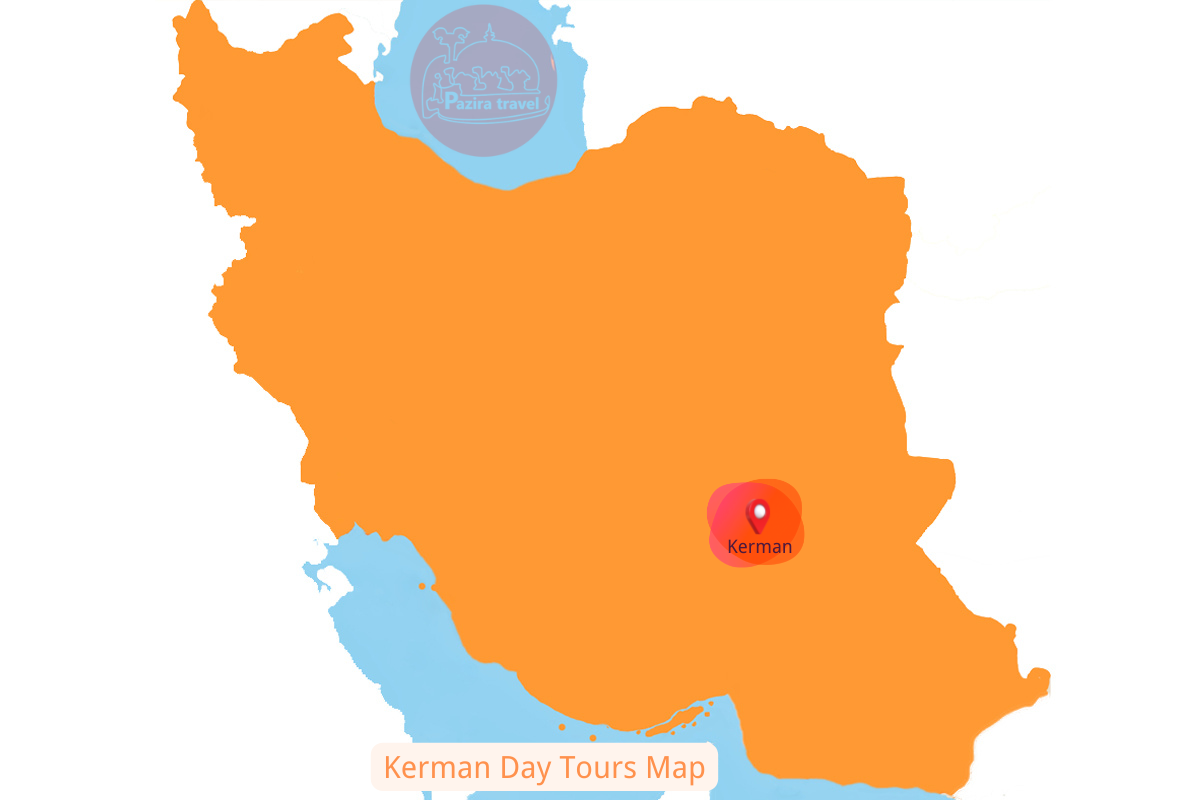
Welcome to the breathtaking world of Persian Gardens - where nature and art collide in a stunning tapestry of waterfalls, pools, and geometric patterns. These glorious gardens have been around for over 2,500 years, providing a calming oasis for city dwellers to immerse themselves in nature's embrace.
But the Persian Gardens are more than just pretty scenery. They are a spiritual haven, with many gardens boasting healing waters and meditative spaces. No wonder their design has inspired some of the world's most famous gardens, like the Taj Mahal, Alhambra, and Generalife Gardens.
Even today, Persian Gardens like Fin Garden in Kashan, Eram garden in Shiraz and Shazdeh garden in Kerman are a muse for garden designers who want to create their own slice of paradise. A visit to these gardens is not just a journey through nature, it's a journey through time - a reminder of the timeless beauty of design and the power of nature to soothe our souls.
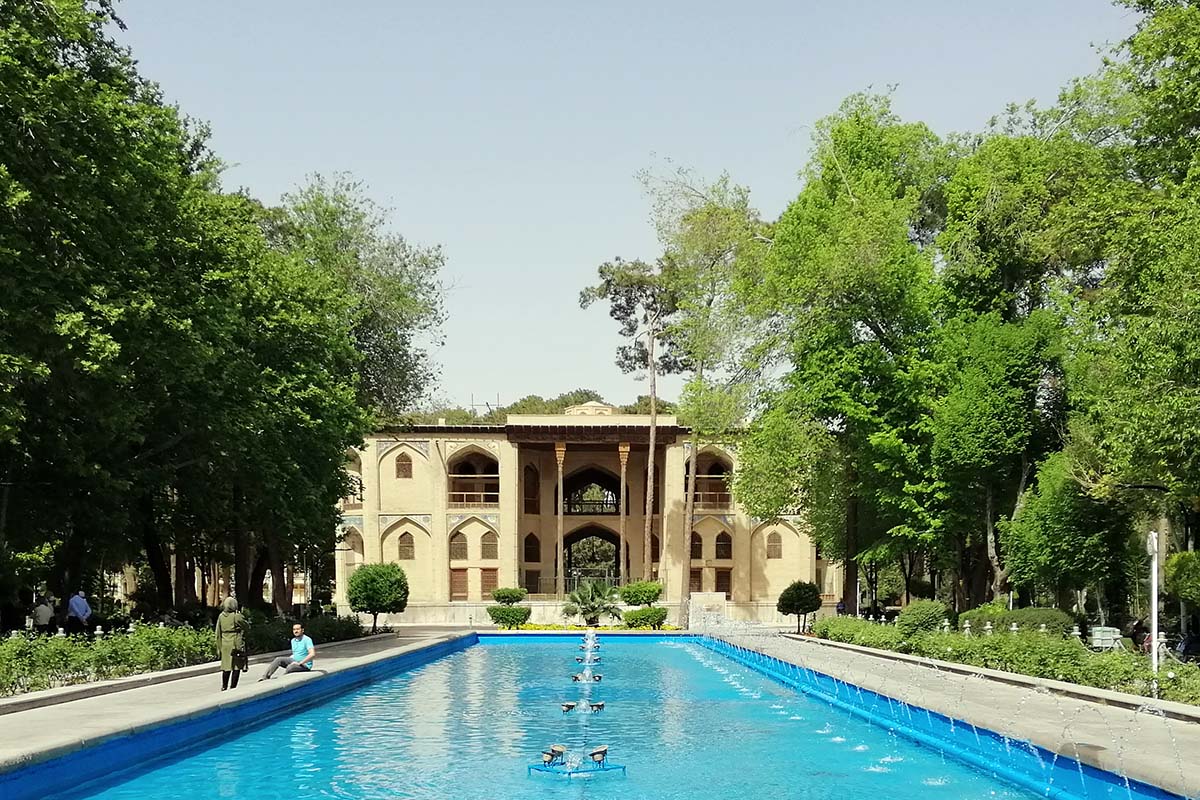
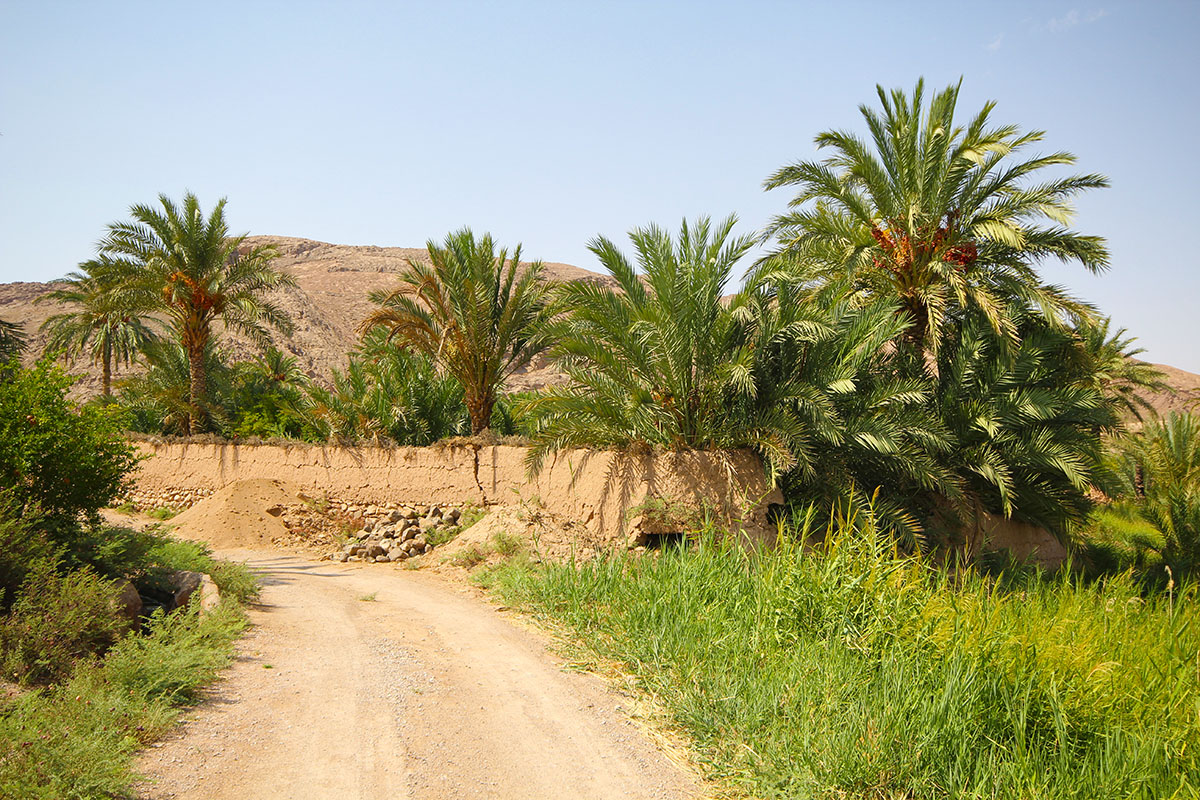
Behold the Persian Qanats, a jaw-dropping masterpiece of ancient engineering! These underground channels, born over 3,000 years ago, work like magic to quench the thirst of Iran's parched lands.
The Qanats are an underground network of tunnels, wells, and shafts that tap into natural aquifers, delivering water to the surface. Gravity pulls the water to the surface as the tunnels slope gently upwards.
But what's more, these incredible structures have stood the test of time, with many of them still functioning after centuries of use. And let's not forget the hard work that goes into maintaining them. The tunnels constantly need clearing of debris and sediment to keep the liquid gold flowing.
The Qanats are cultural treasures, symbolizing the resilience and resourcefulness of the Iranian people. They even played a significant role in shaping the region's history and way of life.
And, it's no surprise, these impressive feats of engineering have earned a spot on the UNESCO World Heritage Site list. Efforts are underway to keep these miraculous tunnels preserved for generations to come.
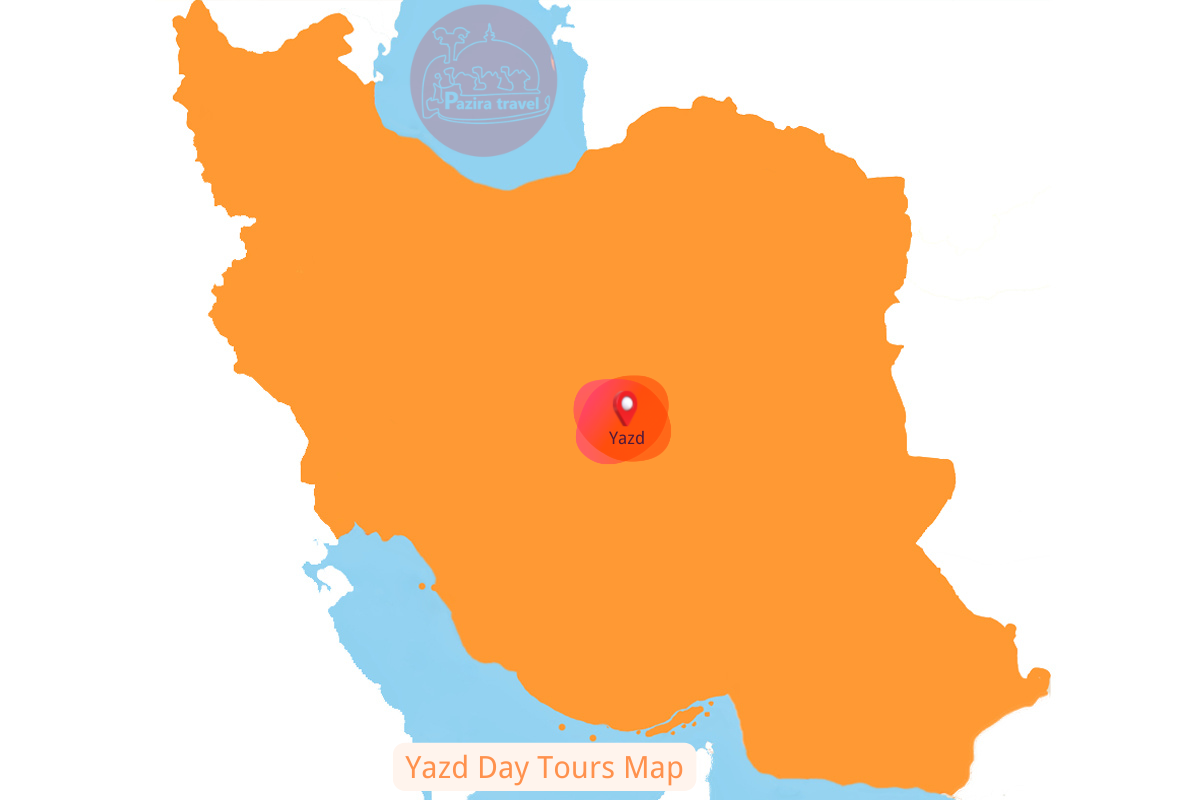
Behold the mighty Trans-Iranian Railway, spanning a colossal 1,394 kilometers and connecting the Caspian Sea to the Persian Gulf. Stretching through Iran's most vibrant cities, including Tehran and Isfahan, this railway has been a lifeline for Iranians since its construction began in 1927.
After years of toil, the railway's completion in 1938 marked a major milestone in engineering history. It not only revolutionized the transportation of goods and people across Iran, but it also became a symbol of progress and security for the nation.
This iconic railway continues to play a massive role in Iran's economy to this day, serving as a vital channel for the transport of precious minerals, oil, and other goods. But it's not just a workhorse – it's also a beloved transportation option for Iranians and tourists alike, showcasing the wide-ranging beauty of Iran's landscapes and cultures.
Despite facing numerous obstacles over the years, including natural disasters and political unrest, the Trans-Iranian Railway has stood the test of time as a symbol of Iran's strength and resilience. It's a testament to the tireless efforts and brilliance of the Iranian people.
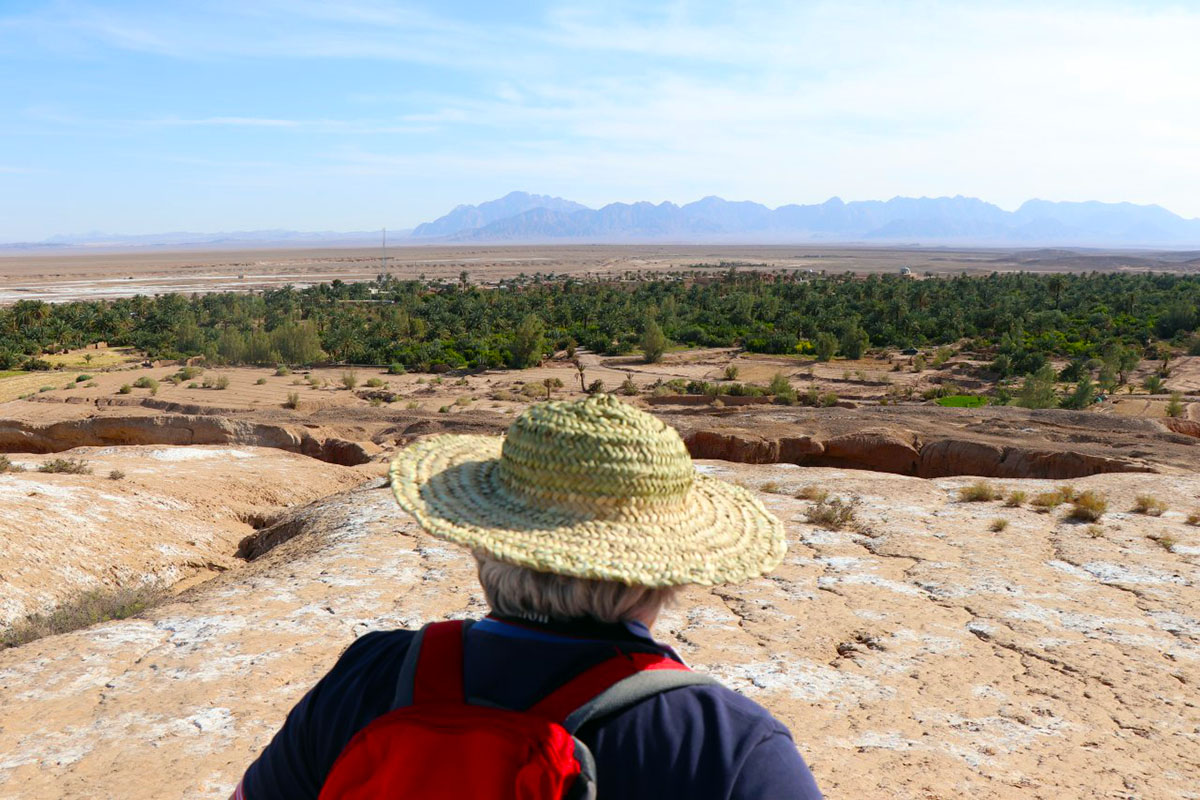
Tucked away in the southeastern corner of Iran, behold the Lut Desert, also known as Dasht-e Lut. This savage slice of earth is one of the largest deserts in Asia, sprawling over 51,800 square kilometers of sand dunes, salt flats, and jagged terrain. Yet, amidst the harshness, unique critters and plants have found a way to thrive in this rugged desert realm.
But hold onto your sun hats! The Lut Desert's extreme temperatures are no joke. In 2005, NASA recorded a scorching 70.7 degrees Celsius, making it one of the hottest places on the planet. However, the heat and rugged terrain didn't stop ancient humans from settling in the area. In fact, the Bronze Age city of Shahr-e Sukhteh is smack dab in the middle of the desert.
Today, brave adventurers and nature lovers flock to the Lut Desert to explore this otherworldly landscape. Whether you're trekking on foot, riding a camel, or roaring along in a 4x4 vehicle, you'll be awestruck by the stunning beauty of this desert wonderland.
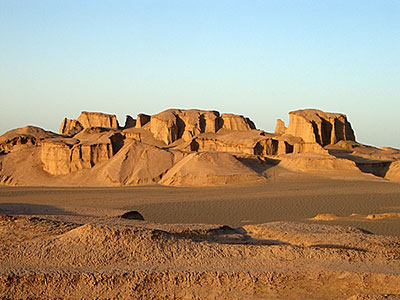
Get ready to step into a fairytale world of lush greenery and wild critters! Iran's Hyrcanian Forests, ancient woods over 50 million years old, are a treasure trove of biodiversity, bursting with life. You'll spot the likes of Caspian tigers, Persian leopards, brown bears, and lynxes roaming freely. Or, look up to catch the majestic golden eagle and the cute Caucasian black grouse.
But wait, there's more! Over 2,000 plant species thrive in these woods, some even used in traditional medicine.
Yet, all this beauty is at risk! Deforestation, climate change, and human activity are taking a toll on the Hyrcanian Forests. But don't fret! Conservation efforts, such as national parks, are underway to protect these precious woods.
Are you ready for a magical adventure? Get lost in the lush greenery, hike, camp, and spot wildlife. The Hyrcanian Forests are a true wonder of nature and a must-visit for anyone who loves nature and conservation.
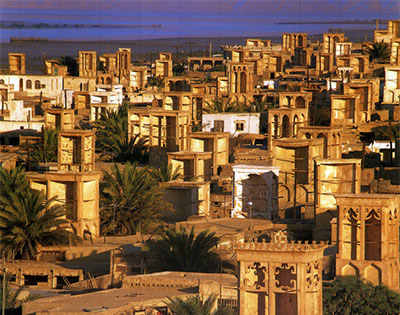
Embark on an unforgettable journey through Iran's spellbinding UNESCO World Heritage Sites! Get lost in the intricate designs of stunning architecture, soak up centuries of history, and revel in fascinating tales that weave through each site. Whether you're a snap-happy photographer or simply love exploring new places, our expert guide can lead you on daily tours to the must-see spots scattered across Iran. For a full-blown adventure, why not snag an all-inclusive package tour that covers every inch of this captivating country? But remember, to make the most of your time, allow at least 30 days to soak up all the highlights!